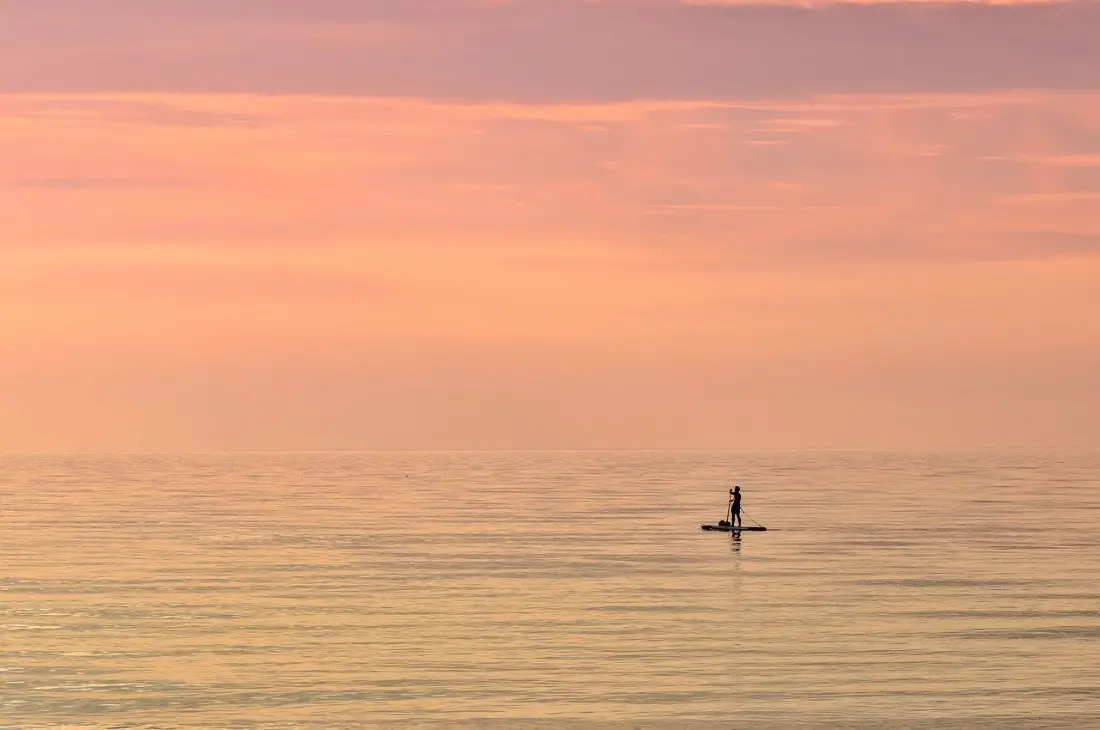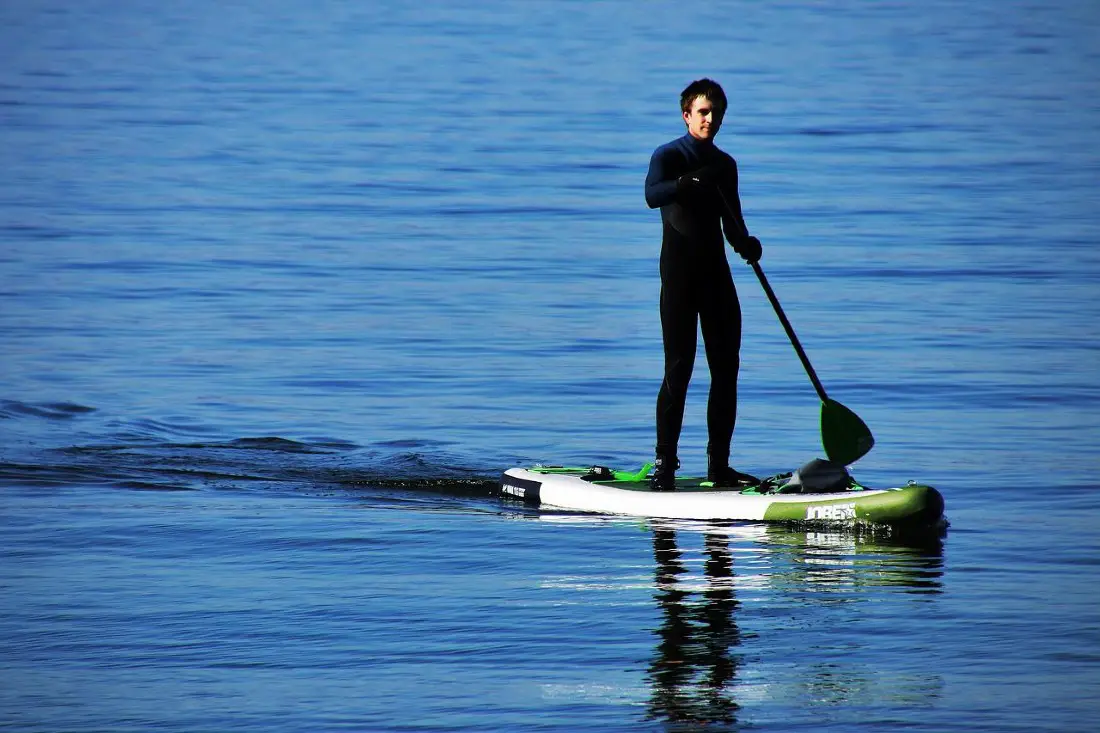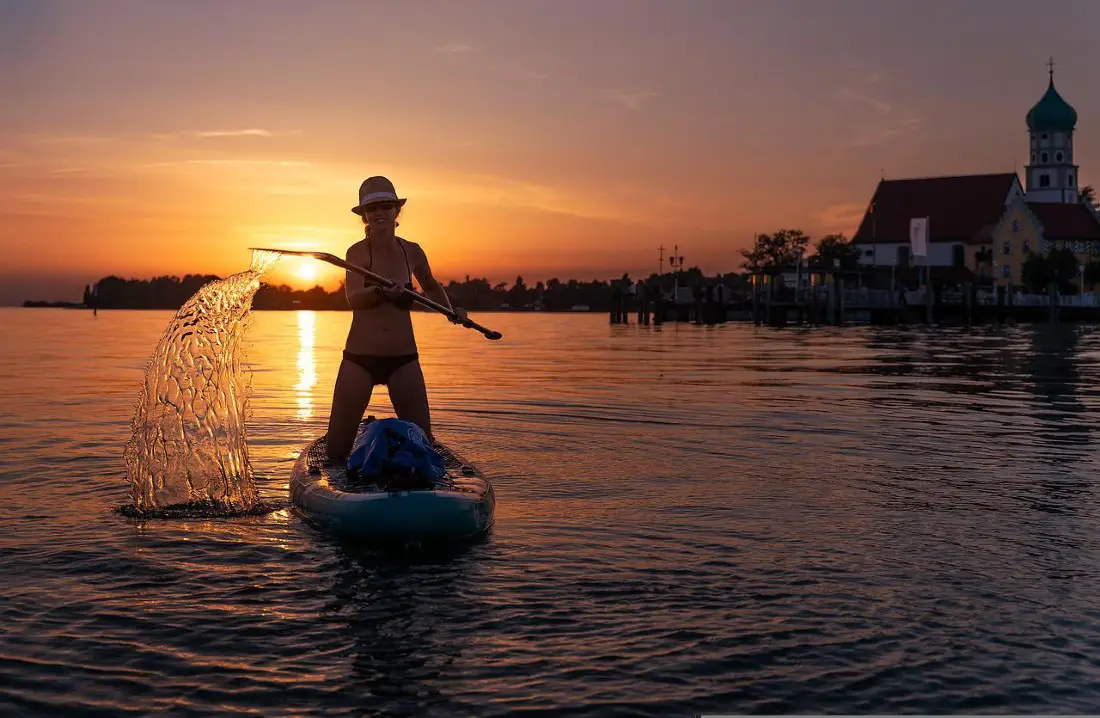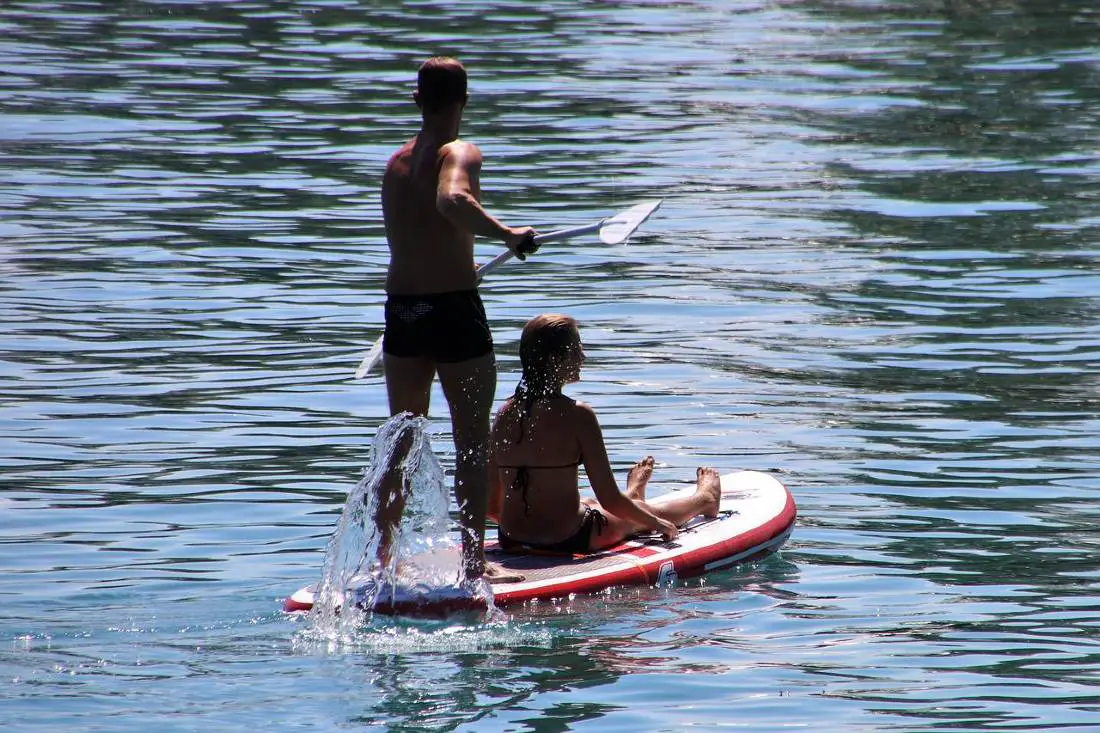This post may contain affiliate links. If you make a purchase through an affiliate link, I will earn a commission at no extra cost to you. Thanks for your support.
Stand-up paddle boarding is a fun activity that has become an extremely popular hobby for water sports enthusiasts. And for a good reason. It’s a wonderful workout, a lot of fun, and a great way to experience nature.
However, before you try this thrilling sport, there are a few things you should be aware of. Everything from basic boarding necessities to safety practices must be addressed correctly.
Therefore, in this article, we bring you the ultimate checklist for stand-up paddle boarding to ensure safety and to help you get the most out of your time.

The Ultimate Checklist For Stand-Up Paddle Boarding
So, are you ready to hit the water on a stand-up paddle (SUP) board? Then make sure to take this paddle boarding advice below:
1. Most Needed Essentials
Although SUP is not particularly risky in and of itself, even the safest activity requires everything to be in place for a safe and enjoyable ride.
Thus, to ensure the safest boarding activity this summer, don’t forget to pack these four SUP essentials:
- Personal Flotation Device (PFD)
- Air Pump (Electric/Manual)
- SUP Leash
- Paddle Board, Paddle, and Fins
Personal Flotation Device
For stand-up paddle boarding, a personal flotation device, or PFD, is a necessary piece of safety equipment. It keeps you safe if you fall into the water.
However, there are two main SUP PFDs: inflatable and foam. Inflatable PFDs are more expensive but offer more protection, while foam PFDs are less costly but don’t provide as much protection.
So, an inflatable PFD is the best option for comprehensive protection. But, if you’re on a budget or only plan on using your PFD occasionally, a foam PFD will suffice.
Air Pump
Anyone who owns a SUP should have an air pump in their kit arsenal. It is used to inflate the board and can also be used to adjust the pressure of the board if necessary.
There are two types of air pumps: electric and manual.
Electric air pumps are more expensive although they are much faster than manual ones. Therefore, you’ll be able to board the boat more quickly if you have one.
Additionally, they are more efficient since you will not have to worry about pumping manually.
Manual pumps require more effort, but they are less expensive and can be used anytime without worrying about batteries.
SUP Leash
SUP leashes are an essential safety tool for stand-up paddle boarding. It is a cord that attaches your paddle board and your ankle. The leash will keep you connected to your board even if you fall off.
While they may not be required by law everywhere, it is always best to err on the side of caution and wear one when paddling.
Paddle Board, Paddle, and Fins
Although many SUP accessories are available, not all are made to work the same way for everyone. Thus, you must choose the right board, paddle, and fins for your needs.
For instance, if you’re just starting, you’ll want to choose a stable and simple board to maneuver, a paddle that’s best with longer strokes, and fins that help with easy tracking.
Experts suggest selecting boarding equipment that can be used for multiple purposes, like an all-around board that can be used in various conditions.
For paddles, you can go with the longer ones for stability and longer strokes, or the shorter paddles which are more maneuverable.
Lastly, most all-around boards come with removable fins. You can experiment with fin layouts to see which suits your board the best.

2. Clothing and Footwear Essentials
There’s nothing quite like spending a sunny day on the water paddle boarding and enjoying the fresh air. But remember to pay attention to the attire and shoes you’re wearing.
What should you wear when paddle boarding to ensure a comfortable ride?
It’s crucial to dress appropriately for the weather first. If it’s warm out, you’ll want to wear light, breathable clothing so you won’t get too hot. But you’ll need to layer up to stay warm if it’s cold or windy.
In either case, avoid loose or baggy clothes that could get caught on something or blow into your face.
As for footwear, you’ll want to choose comfortable shoes with enough traction to stay on while wet. The best footwear choice in this scenario would be neoprene or water sports footwear.
3. Recommended Personal Essentials
A comprehensive stand-up paddle boarding checklist must include some personal essentials, such as:
Sunscreen
When most people think of paddle boarding, they envision a relaxing day on the water, soaking up the sun and enjoying the view. But many people are unaware of how physically demanding paddle boarding can be.
Think about it – you’re constantly paddling in the sun, allowing it to take its toll on your skin. That’s why it’s so important to wear sunscreen when paddleboarding.
Not only will sunscreen protect you from harmful UV rays that can cause skin cancer, but it will also help prevent sunburn.

Sunglasses
Sunglasses provide excellent coverage and protection to your eyes from the sun. They’re generally polarized, which means you’ll be able to see even when the sun is at its brightest.
So whether you’re paddling on a sunny day or fishing in the middle of the ocean, sunglasses will help you see clearly and stay protected.
Water and Dry Snacks
Staying hydrated is essential when standing on your stand-up paddle board (SUP). But what is the best approach to ensure that? Water, of course! And what goes great with water? Dry snacks!
Dry snacks are the perfect complement to water when you’re out paddling. They’re easy to pack and won’t make you feel bloated or uncomfortable.
Plus, they’ll help keep your energy levels up so you can enjoy your time on the water.
First-Aid Kit
A first-aid kit will help you care for minor injuries while on the water.
So, what should you include in your SUP first-aid kit? Here are a few essential items:
- Bandages: To cover any cuts or scrapes
- Antiseptic: To clean and disinfect any wounds
- Pain reliever: For any aches or pains
- Allergy medication: If you’re allergic to anything, it’s better to be safe than sorry
SUP Carry Strap and Transport Cart
A carry strap and transport cart for your SUP will make getting your board to and from the water much more manageable.
Because carrying your board can be pretty tiring while walking, having a strap or cart will make the process much more straightforward.
Don’t hesitate to get a carry strap and transport card for your SUP. It’s also an excellent technique to prevent damage to your paddle board when moving it.

Safety Tips to Maintain in SUP Boarding
- Wear appropriate clothing and footwear along with a life jacket and leash to be safe on board.
- Don’t go out alone; it’s good to have at least one other person so that there is someone to help in case anything goes wrong.
- Be aware of your surroundings. Avoid lakes, such as Big Bear Lake, if there are too many motorized boats or watercraft traffic.
- Check the weather conditions before you go out. There can be times that due to inclement weather conditions, there could be solid waves and currents. So, you need to be prepared beforehand.
- Follow the rules of the waterway. You must obey all posted signs and buoys.
- Don’t drink and paddle. The influence of alcohol can lead you to danger while paddleboarding.
- Know your limits. Do not try out stunts that are beyond your limits. You must practice a lot before trying them out in the actual field.
- Review proper paddling techniques. Abide by basic paddling techniques to ensure a safe start on board. You may also take a course on safe paddle boarding.
- Purchase the appropriate paddle boarding gear. You should select the correct size paddle board based on how experienced you are and which size paddle board and paddle fit you.
Conclusion
Stand-up paddle boarding is rapidly growing in popularity among people of all ages. Anyone can do it, including kids, seniors, and people with no prior experience with paddling.
The main concern is maintaining safety and riding techniques, which we covered in this article. We highlighted the most crucial boarding gear that every SUP user should have and the basic safety principles that must be followed.
So, whether you’re a first-time paddler or a seasoned pro, try out this ultimate checklist for stand-up paddle boarding and have a fun and safe experience on the water.
